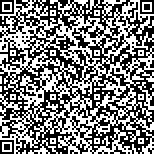| 引用本文: | 王晓辉,张铭,曹瑾,王颖香,王静,江滨,胡明.北京、成都、兰州居民家庭药品可及性入户调查[J].中国现代应用药学,2020,37(13):1650-1655. |
| WANG Xiaohui,ZHANG Ming,CAO Jin,WANG Yingxiang,WANG Jing,JIANG Bin,HU Ming.Investigation on Medicine Accessibility of Households in Beijing, Chengdu and Lanzhou, China[J].Chin J Mod Appl Pharm(中国现代应用药学),2020,37(13):1650-1655. |
|
| |
|
|
| 本文已被:浏览 1794次 下载 1144次 |

码上扫一扫! |
|
|
| 北京、成都、兰州居民家庭药品可及性入户调查 |
|
王晓辉1, 张铭1, 曹瑾1, 王颖香2, 王静2, 江滨3, 胡明2
|
|
1.兰州大学公共卫生学院, 兰州 730000;2.四川大学华西药学院, 成都 610041;3.北京大学药学院, 北京 100191
|
|
| 摘要: |
| 目的 比较和评估新医改政策背景下北京、成都、兰州居民家庭药品可及性及使用情况。方法 采用分层多阶段随机整群抽样方法,在北京、成都、兰州共抽取825户家庭进行入户调研。结果 共收集有效问卷727份(北京281份,成都207份,兰州239份)。北京、成都、兰州分别有26.3%,48.3%,35.6%家庭过去2周内有急性病患者;86.0%,91.2%,94.5%的患者能按医嘱服药;27.7%,40.2%,39.7%的患者服用了抗菌药物。71.9%,59.4%,66.5%家庭有慢性病患者,89.9%,93.0%,70.0%患者能按医嘱服药。此外,被调查家庭90.0%,93.7%,91.2%有药品储备;成都和兰州分别有59.4%和71.6%的家庭能够在15 min内到达最近公立医疗机构,北京只有23.8%。结论 3个城市家庭药品可及性较之前有很大改善,但仍存在问题,相关部门应采取适当措施,进一步提高居民对药学服务重要性的认识,促进家庭合理用药、保证用药安全;完善医疗保险制度和支付方式,切实提高居民看病就医获得感和家庭药品可负担性水平。 |
| 关键词: 新医改 入户调查 药品可及性 |
| DOI:10.13748/j.cnki.issn1007-7693.2020.13.023 |
| 分类号:R956 |
| 基金项目:国家自然科学基金项目(71473170) |
|
| Investigation on Medicine Accessibility of Households in Beijing, Chengdu and Lanzhou, China |
|
WANG Xiaohui1, ZHANG Ming1, CAO Jin1, WANG Yingxiang2, WANG Jing2, JIANG Bin3, HU Ming2
|
|
1.School of Public Health, Lanzhou University, Lanzhou 730000, China;2.West China School of Pharmacy, Sichuan University, Chengdu 610041, China;3.School of Pharmacy, Beijing University, Beijing 100191, China
|
| Abstract: |
| OBJECTIVE To assess and compare the household accessibility of medicines in Beijing, Chengdu and Lanzhou under the background of the new medical reform. METHODS Multistage stratified sampling approach was employed and about 825 households were included in Beijing, Chengdu and Lanzhou. Questionnaire survey was conducted to each household. RESULTS Total 727 valid questionnaires were collected(281 for Beijing, 207 for Chengdu, 239 for Lanzhou). Among the respondents, 26.3%, 48.3%, 35.6% households experienced acute illness in the past 2 weeks; 86.0%, 91.2%, 94.5% of them were able to take medicine as prescribed; 27.7%, 40.2%, 39.7% of them took antibiotics. 71.9%, 59.4%, 66.5% households reported chronic illnesses patients, of which 89.9%, 93.0% and 70.0% were able to adhere the prescription in Beijing, Chengdu, and Lanzhou. In addition, 90.0%, 93.7%, 91.2% of the households store medicine in their home. In terms of accessibility, 59.4%, 71.6% of the households were able to reach the nearest public health institution within 15 min in Chengdu and Lanzhou, while only 23.8% in Beijing. CONCLUSION The accessibility of household medicines in the three cities has improved significantly, but there are still problems. It is recommended that relevant departments to further raise residents' awareness of the importance of pharmaceutical services, and take measures to improve the medical insurance system and payment methods. They also should effectively improve the level of medical treatment for patients and the affordability of household medicines. |
| Key words: new medical reform household survey accessibility of medicines |
|
|
|
|
